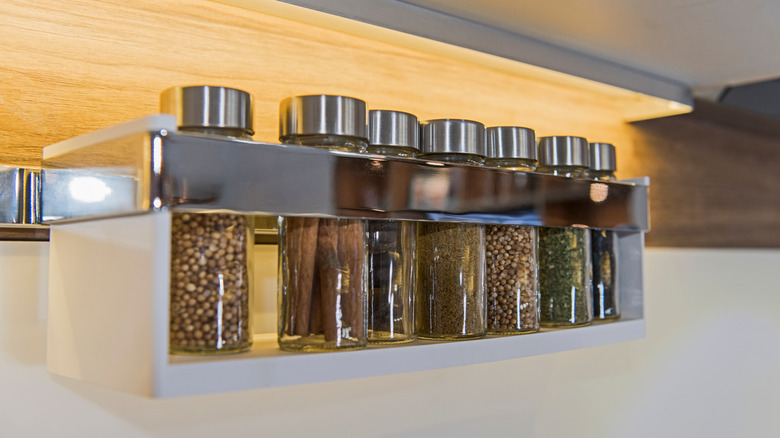The Mistake That's Stripping Your Food Of The Best Possible Pepper Flavor
If you're using pre-ground pepper and not milling peppercorns on your own, you're making a serious kitchen faux pas. This mistake is limiting the flavor potential of your recipes. The oils that give peppercorns their bite begin to evaporate as soon as pepper is ground. And the longer pre-ground pepper sits on store shelves, the less potent it will be when added to food. Conversely, freshly ground peppercorns courtesy of your own pepper mill will contain a higher concentration of these oils and give your dish a much bolder flavor.
Pre-ground pepper might be more convenient in the kitchen but remember that this convenience comes at a cost. It's simply not possible to achieve the same flavor intensity without using freshly ground pepper – so you're essentially sacrificing flavor for convenience. In addition to always grinding your own, you should consider when to add pepper to your recipes to achieve the boldest flavor. Along with flavor enhancement, milling your own pepper can boost wellness, as it produces piperine, a bacteria-fighting compound found in black pepper.
When should you add pepper to a dish (and does peppercorn color matter)?
For the best flavor, grinding fresh peppercorns in recipes is non-negotiable, but timing is also crucial. Even fresh, recently ground black pepper will lose flavor when it's cooked, so be mindful when you're adding the spice to food. If you want to incorporate black pepper into a recipe, add it at the end of the cooking process, just before you're ready to serve the food. And for even more of a peppery boost, add a bit more freshly milled pepper after cooking.
Selecting the right type of peppercorn also impacts flavor. Black peppercorns usually have the most potent bite, while white peppercorns tend to be a little subtler when it comes to spice and heat. White and black peppercorns undergo different types of processing, as the white variety is only picked when fully ripe (peppercorns are technically berries) and submerged in water to remove the external layer. Black peppercorns are picked before they ripen and are dried, not soaked. There are also Sichuan peppercorns (which work great in chili recipes), which come from a different plant altogether. These peppercorns are known for their numbing heat and citrus-tinged flavor, as well as their flowery scent.
Best practices for storing pepper
Spoilage isn't an issue with peppercorns, but the flavor of the spice can decline over time when it's not stored properly. This could also deprive your meals of the desired peppery bite, even if you're using a pepper mill and adding the seasoning to recipes at the best possible time.
Moisture and heat can negatively affect the quality of spices, including peppercorns, so cool, dry areas of the kitchen are best. Sun exposure can also degrade black pepper, so avoid placing spice racks directly across from windows. Instead, keep pepper in a darkened area, such as in a pantry or cabinet, that also offers good protection against moisture and humidity. With the right storage strategy, peppercorns can last up to four years.
The type of container you use to store pepper also plays a role in freshness. Fortunately, pepper grinders are usually airtight, so they're an ideal storage medium for precious peppercorns. With these tips, you can rest assured that your peppercorn-bined pork chops and other recipes are bursting with peppery flavor.


